IUFRO Spotlight #88 – Using a social science lens on the forest bioeconomy
IUFRO Spotlight #88 – Using a social science lens on the forest bioeconomy
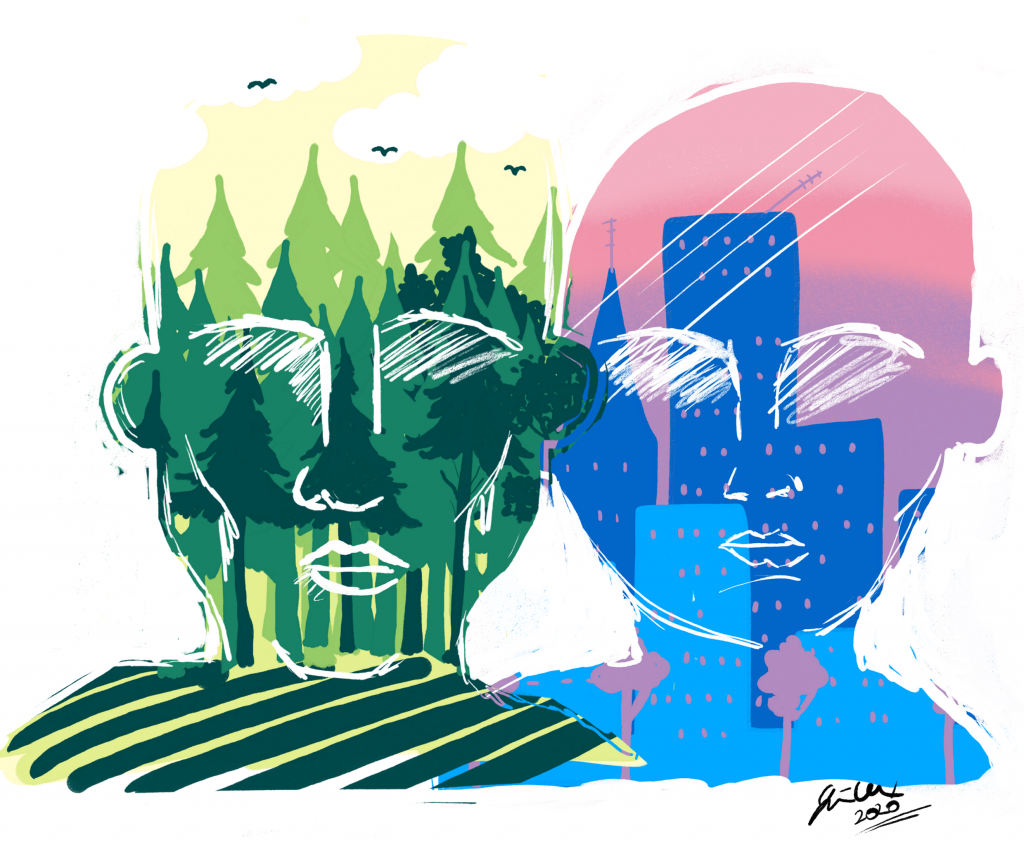
In many countries, forests are important sources of renewable biomass and figure prominently in bioeconomy strategies.
Forests can be stretched beyond their traditional applications and used in textiles, chemicals, and cross-laminated timber, among other things, and can provide climate and ecological benefits, lead to rural employment opportunities and add to regional growth.
Read more…Ghana: communication with stakeholders helps to keep them engaged and active in forest restoration projects
Inside the forest. Wind blows. Leaves dance in synchronized movement. Joy with the result of protecting and restoring degraded forests.
“I was directly involved in the land preparation, planting, and maintenance of the trees together with crops,” said one of the female farmer participants of the forest landscape restoration (FLR) project in Ghana.
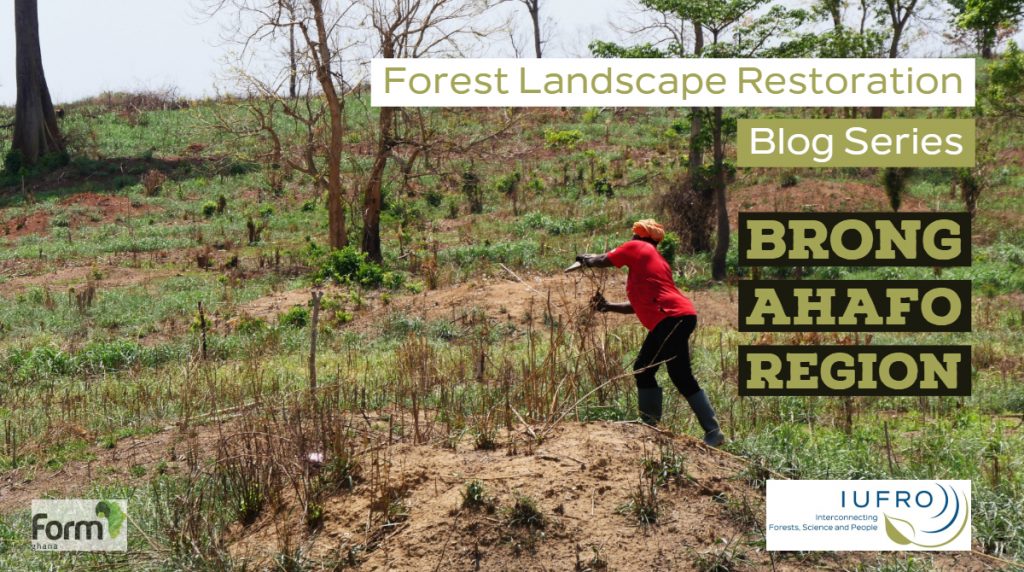
Forest Restoration: enabling environment and mobilizing stakeholder’s support in Guatemala
With the Archaeological Park and Ruins of Quirigua, a protected UNESCO World Heritage Site, and its national tree, Ceiba sp., the fifth blog post is in Guatemala. The name of the project is Chimaltenango Restoration Initiative, in Guatemala, Central Highlands.
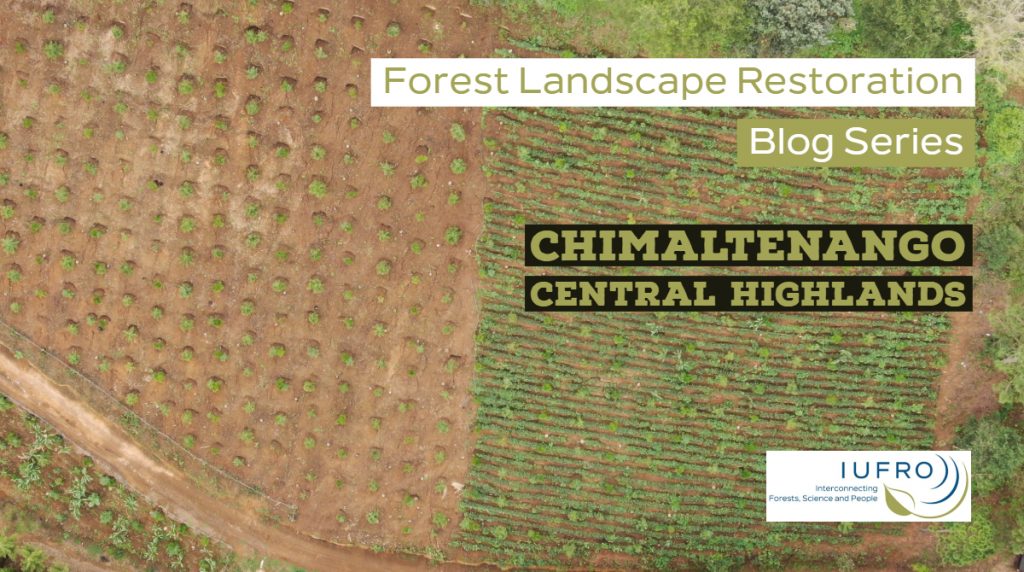
How strong political support is helping restore forests in the Telangana state of India
Land of Taj Mahal and the second-most populous country in the world. India is the fourth country of the blog series on the Forest Landscape Restoration Implementation: Progress on the Ground.
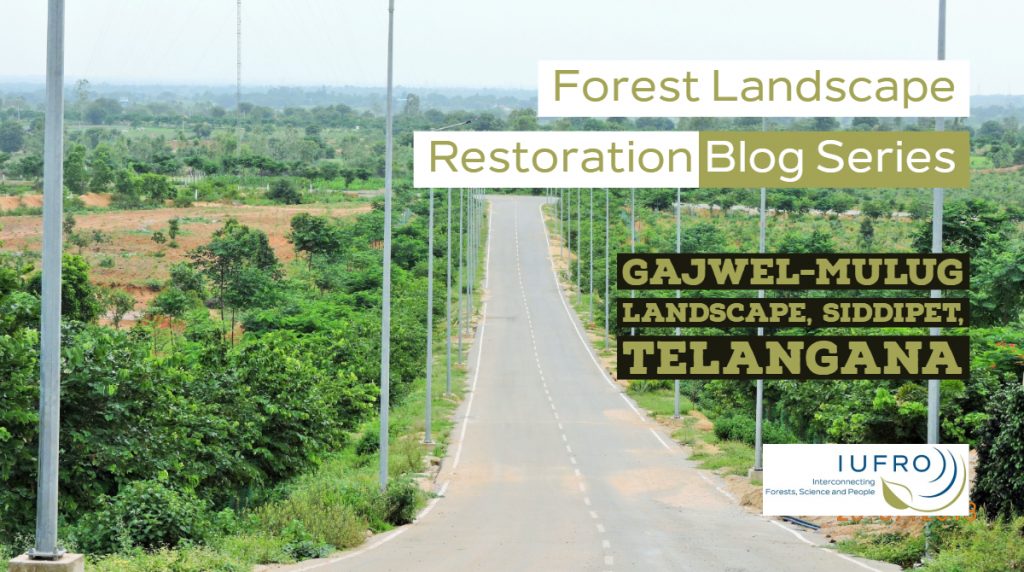
What are the conditions for large-scale FLR success in Madagascar?
Oui, oui mon ami, we are in Madagascar, the third blog post in our FLR Snapshot series. The fourth biggest island in the world and the house of lemurs. FLR is a hot topic in the Boeny Region, which is dominated by vast flat areas below 400 m in altitude, with volcanic rocks cutting across the long plains along the coast and a dense network of rivers flowing through the landscape. Among the important networks and governance structures in the region, is the FLR committee for the Boeny region, established to connect the many FLR actors and develop a common base for knowledge sharing and capacity development.

How to obtain desired results in forest restoration through technology and cooperation
Northern Mongolia, sub-taiga forest, Tujyin nars National park, is the second blog post of the FLR Snapshot Series. The second largest landlocked country in the world, land of Mongols, with breathtaking landscapes. Tujyin Nars Reforestation Initiative was created to restore pine forest that had been deforested and degraded due to improper forest harvesting and frequent fires. It has become one of the best examples of successful forest landscape restoration of deforested and degraded forests in northern Mongolia.
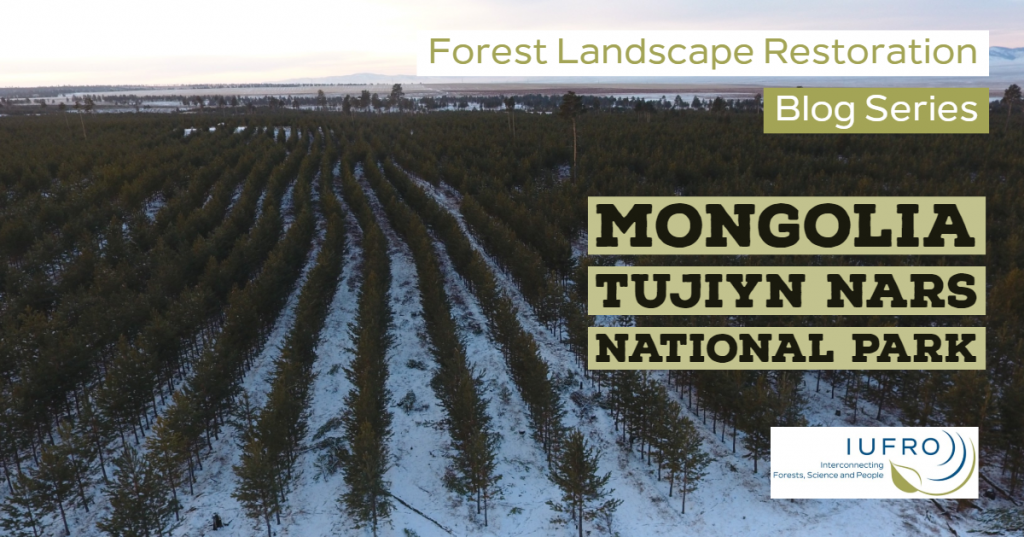
Restoring for water – the basis to address forest restoration
In the first blog post of the Forest Landscape Restoration (FLR) Snapshot Series we will focus on the project Forest Landscape Restoration Initiative of the Kiuñalla Community, in the Apurimac Region. Located in the southern Andes of Peru, this region has been one of the first in initiating actions within the framework of the country’s commitment to the Bonn Challenge to restore 3.2 million hectares of degraded areas through plantations for commercial purposes as well as for the recovery of ecosystem functions.
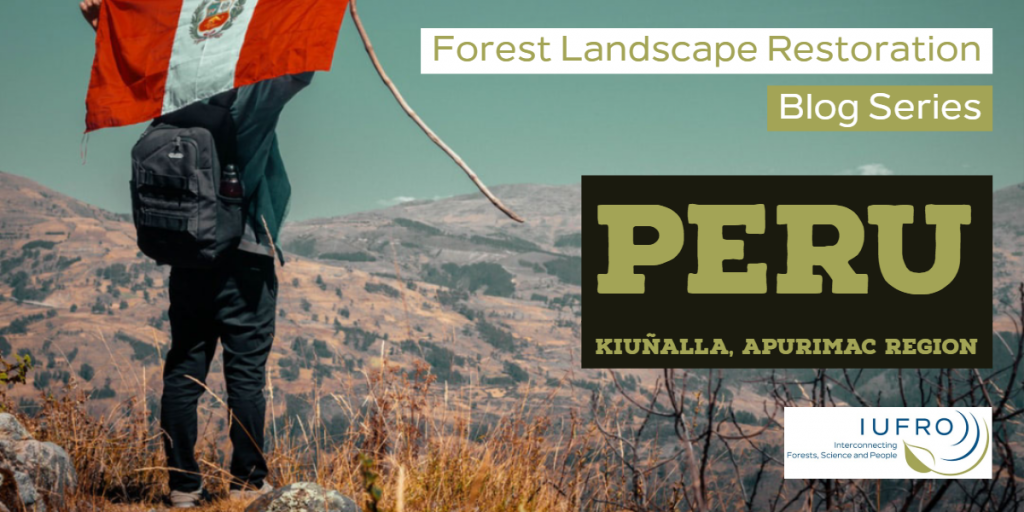
IUFRO 125th Anniversary Congress Spotlight #51 – Pooling resources to meet sub-Saharan forest challenges
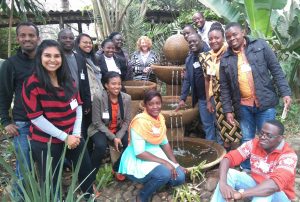
Training workshops for early and mid-career forest scientists across FORNESSA countries contribute to enhancing research competence and networking. (Photo by Michael Kleine, IUFRO)
Collaboration and cooperation are the keys to facilitating learning and making better use of research outcomes in sub-Saharan African countries facing severe forestry challenges.
That’s the philosophy behind Dr. Joseph Cobbinah’s upcoming session on the impact of forestry research on policy, livelihoods and economic development in sub-Saharan Africa. The session will take place at the IUFRO 125th Congress in Freiburg in September. Read more…
IUFRO Spotlight #44 – Evidence linking community forest rights and improved forest condition inconclusive
There is an assumption that there is a correlation, possibly even a direct cause and effect relationship, between the devolution of forest governance and improved forest condition.
The United States Agency for International Development (USAID) was interested in testing that hypothesis to assess its impact on global climate change mitigation and adaptation.
To that end, a group of researchers at Michigan State University was tasked with reviewing, summarizing and commenting on the empirical evidence supporting that conclusion.
In their review of the literature, they found the assumption deserves, at best, a “maybe.” Read more…
Congress Spotlight #17 – Forest outlook: What does the future hold?
Forest outlook: What does the future hold?
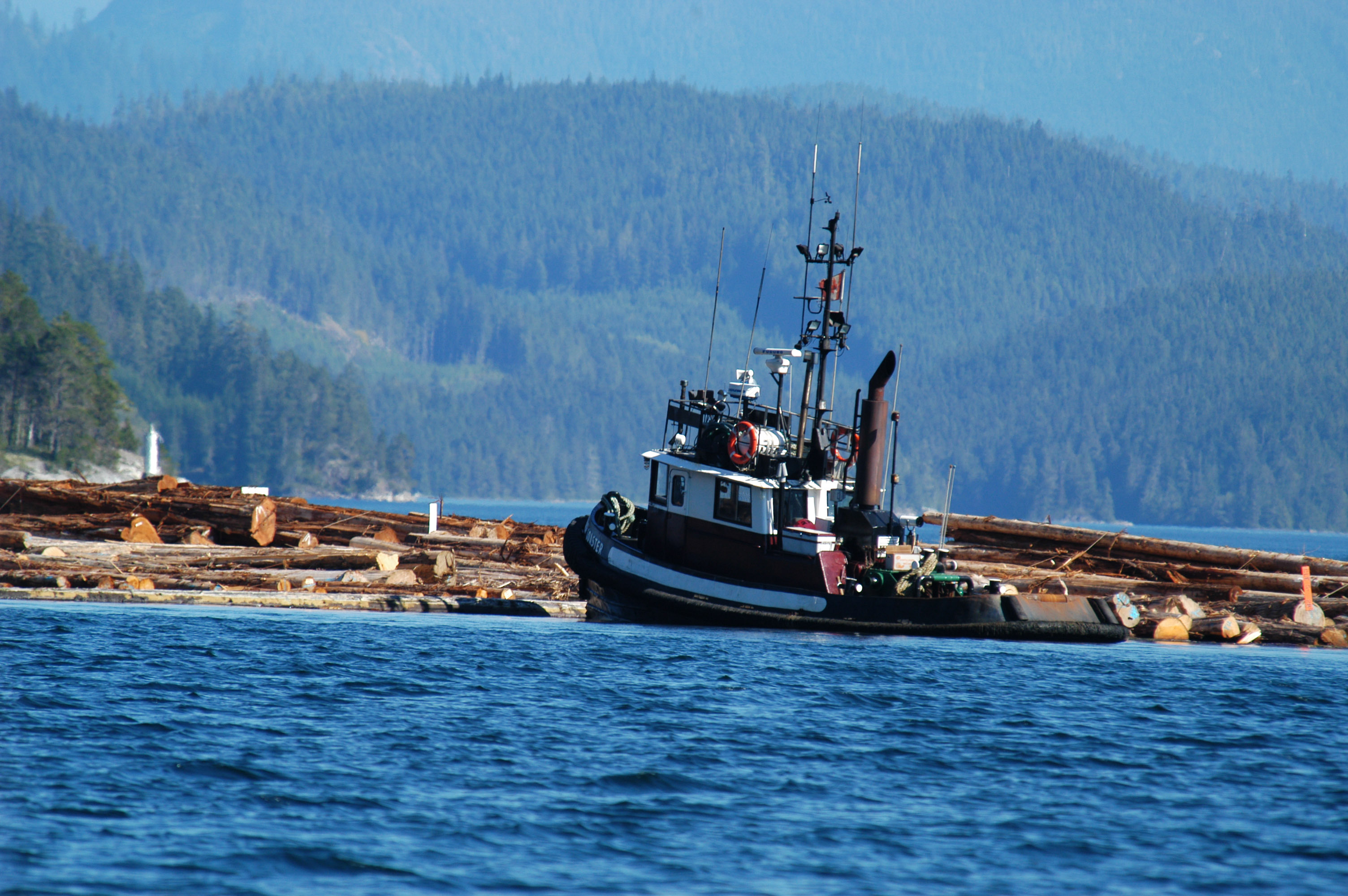
Logs being moved by sea to a sawmill. Major changes in the patterns of demand for logs may result in them being processed in a different country to where they were harvested. (Photo by John Innes)
Forest researchers from around the world will gather at the IUFRO 24th World Congress in Salt Lake City this fall where one of the issues will be to address the future, and the related challenges, facing forests and forest management in the 21st century.
Providing a sort of scientific crystal ball to give glimpses into the years ahead and discuss how to meet and adapt to coming challenges will be a sub-plenary session at the congress entitled, appropriately enough, “The Future of Our Forests”.
Resources for the Future (http://www.iufro.org/science/task-forces/resources-for-future/), the IUFRO Task Force behind this session, has set out to examine four major game-changers – globalization, plantations, new products and forest ecosystem services – and what they mean, and will mean, for forests, forest research and forest-dependent communities.
